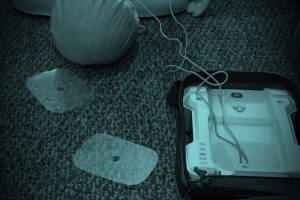
Using straight-line distance to estimate the proximity of public-access Automated External Defibrillators (AEDs) or volunteer first-responders to potential out-of-hospital cardiac arrests (OHCAs) does not reflect real-world travel distance. The difference between estimates may be an important consideration for bystanders and first-responders responding to OHCAs and may potentially impact patient outcome. Researchers mapped 4355 OHCA (01/04/2016-31/03/2017) and 2677 AEDs in London (UK), and 1263 OHCA (18/06/2017-17/06/2018) and 4704 AEDs in East Midlands (UK) using ArcGIS mapping software.
Real-world travel routes to the nearest AED were (median) 219 m longer (623 m vs 406 m) than straight-line estimates in London, and 211 m longer (568 m vs 357 m) in East Midlands. The identity of the nearest AED changed on 26% occasions in both areas when calculating real-world travel routes.
Calculating real-world travel routes increases the estimated travel distance and time for those responding to OHCAs. Calculating straight-line distance may overestimate the benefit of the community response to OHCA.
https://www.ncbi.nlm.nih.gov/pmc/articles/PMC8592858/






